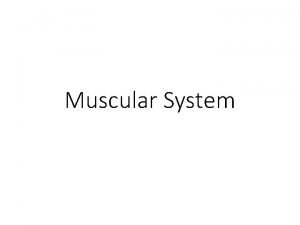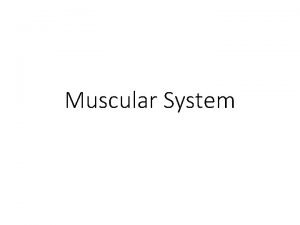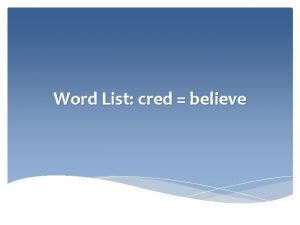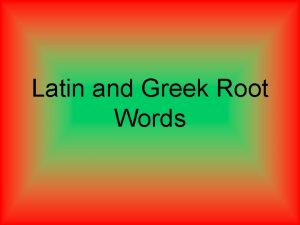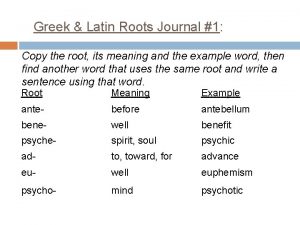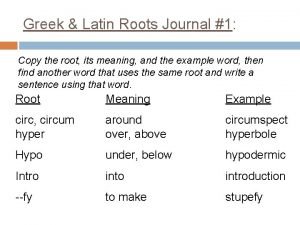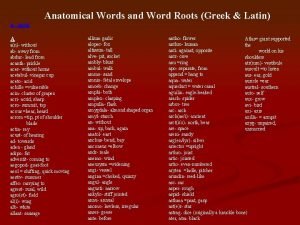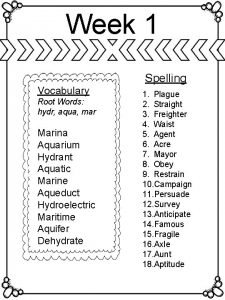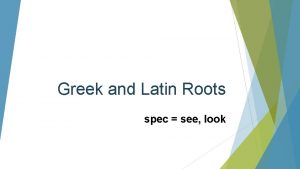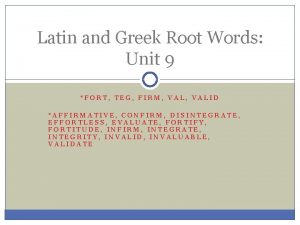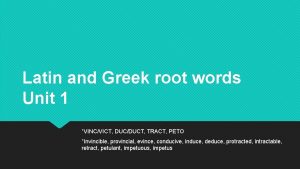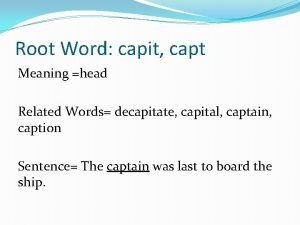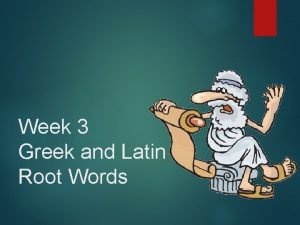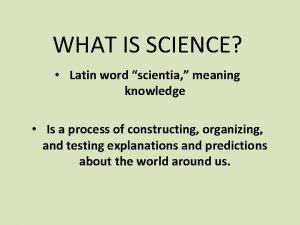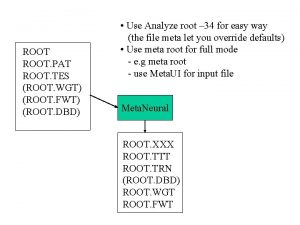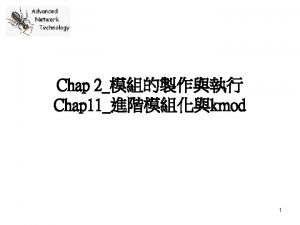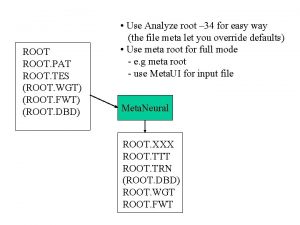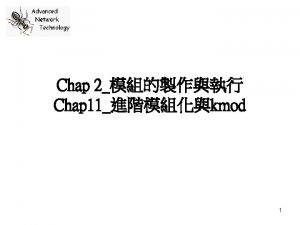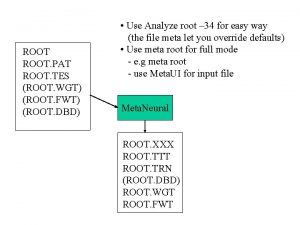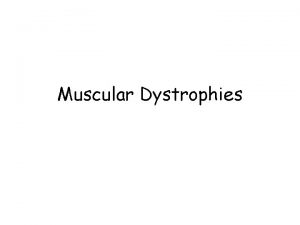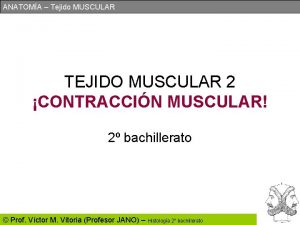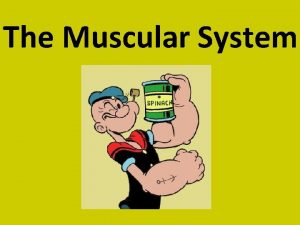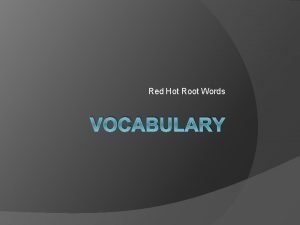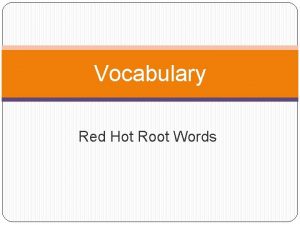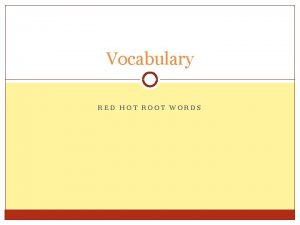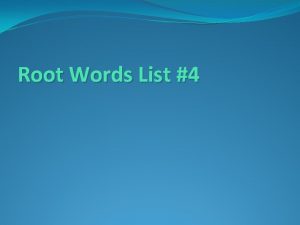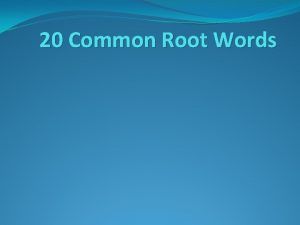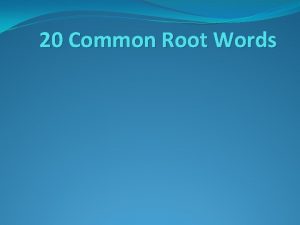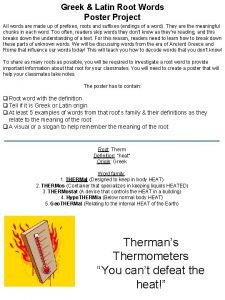Muscular System Latin Root Words Latin Root Word






















- Slides: 22

Muscular System

Latin Root Words Latin Root Word Definition Sarco Muscle Myo Muscle Epi- Above Peri- Around Endo- Inside -Um Structure Fascia Band Mere Part Reticulum Net -ase Enzyme Synergy working together Agonist Prime mover Antagonist Working against

Tissue Review Primary purpose of Muscles? Movement

Tissue Review Cardiac Skeletal Smooth

The Muscles: Each muscle is an organ comprised of skeletal Muscle Connective tissue coverings, _____tissue, several ______ Nervous Blood to _______ tissue to cause it to contract, and ______ nourish it. Example Question: Muscles are organs that are composed of what types of tissues?

• Connective Tissue Coverings: A muscle has several dense connective coverings. Layers of dense connective tissue, called ____, Fascia surround and separate each muscle. This connective tissue extends beyond the ends of the muscle and gives Tendon that are fused to the periosteum rise to cord like ____ of bones. Sometimes muscles are connected to each other by broad aponeurosis sheets of connective tissue called __________

Aponeurosis



• Connective Tissue Coverings: Under the outer layer another layer of connective tissue around each whole muscle is called the epimysium (above the muscle) ______________ Perimysium (around the muscle) surrounds The ______________ individual bundles of muscle fibers called ______ Fascicles within each muscle Each muscles cell (fiber) is covered by a connective tissue Endomysium (inside the muscle) layer called ____________

Bone Epimysium Perimysium Tendon Endomysium Fascicle Perimysium Endomysium Muscle Fiber Fascicle Perimysium


• Skeletal Muscle Fibers Structure The muscle fiber membrane is called the Sarcolemma __________ which contains the cytoplasm sarcoplasm called _________. Within the sarcoplasm are many parallel Myofibrils __________composed of smaller filaments and Thin Filaments called Thick __________. These myofilaments are actually two types of filaments, a thicker filament composed of the protein myosin _______ and a thinner mostly made of the actin protein _______.


Bone Tendon Fascia Epimysium Perimysium Endomysium Nucleus Fascicle Nerve B. V. Sarcoplasmic Reticulum Myofibril Muscle Fiber Sarcolemma Actin (Thin) Myosin (Thick)


• Skeletal Muscle Fibers Structure A bands and the light The dark stripes are called ___ I bands are called _______. Sarcomere A ________ is defined as a unit extending from Z line one _____ line to the next (center of the light band. )


Skeletal Muscle Fiber Sarcoplasmic Reticulum Actin Sarcomere Myosin Myofirbril H zone I Band Z Line A Band M Linke A Band I Band

H Zone Z line I Band M line A Band Z line I Band

Sarcomere Anatomy • I Band = Light, Thin Actin Filaments only • A Band = Dark, Thick Myosin Filaments and Thin Actin Filaments • Z line = I band (actin filaments) connect to Z line • H Zone = Thick Myosin Filaments only • M Line = Thickening in the H zone

Muscle Identification • Use the text book to label the muscles in your packet. • You will need to begin memorizing these muscles. • Page 188 - 199
 Root word for muscular
Root word for muscular Epi latin root
Epi latin root Difference between strength and endurance
Difference between strength and endurance Words with the root word cred
Words with the root word cred Words with root ped
Words with root ped Greek and latin root words
Greek and latin root words 5 a day language review week 8
5 a day language review week 8 Levi root words
Levi root words Example of root word
Example of root word Cyno root word
Cyno root word Graph prefixes
Graph prefixes Aqua spelling
Aqua spelling What does the root word puls
What does the root word puls Greek and latin roots spec
Greek and latin roots spec Vig latin root
Vig latin root Fort latin root words
Fort latin root words What does the latin root vict mean
What does the latin root vict mean Cor root word
Cor root word Cor meaning latin
Cor meaning latin Latin word scientia
Latin word scientia The term audit originate from the latin word
The term audit originate from the latin word Latin word for purple
Latin word for purple The word report is taken from latin word…..
The word report is taken from latin word…..
